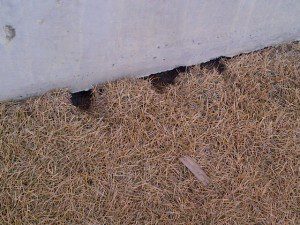Shield Your Grass: Reliable Vole Control Techniques
Shield Your Grass: Reliable Vole Control Techniques
Blog Article
Comprehensive Overview to Reliable Vole Insect Control: Problem Recognition and Therapy Approaches
In the realm of reliable bug control, vole infestations pose an unique obstacle that demands a strategic technique. By checking out the nuances of vole behavior, comprehending crucial indicators of invasion, and reviewing an array of control options, one can establish an extensive strategy to fight these evasive bugs.
Recognizing Vole Habits
Vole behavior is identified by their burrowing habits and fast reproduction rates, making them a challenging bug to manage effectively. These small rats usually create complex tunnel systems underground, utilizing them for shelter, food storage, and transport. Voles are herbivores, taking in a variety of plants, roots, light bulbs, and turfs, which can trigger substantial damages to yards, orchards, and grass. Their rapid reproductive rate further complicates control initiatives, with women with the ability of producing multiple trashes in a single year, each containing a number of children.
Comprehending vole behavior is essential for efficient insect control strategies. By identifying their burrow areas, monitoring feeding locations, and implementing targeted control approaches, such as trapping or environment modification, vole invasions can be managed effectively.
Signs of Vole Problem

Prevention Techniques
Applying reliable prevention approaches is critical in lessening vole infestations and guarding greenery from their damaging feeding routines (vole control). To avoid vole infestations, it is important to start by eliminating potential food resources and shelter. Keep yard and vegetation trimmed short, get rid of weeds and debris, and keep a neat garden or grass to make the area much less appealing to voles. Installing obstacles such as hardware cloth or underground fencing can also help deter voles from going into specific areas. In addition, decreasing excess wetness by dealing with dripping pipelines and ensuring correct drain can make the environment much less congenial for voles.
Frequently evaluating the home for indicators of vole activity, such as paths and burrow openings, is important for early discovery and prompt action. If vole task is presumed, think about using repellents or traps purposefully placed near their paths.
Non-Lethal Control Techniques
To efficiently handle vole populaces while prioritizing gentle methods, non-lethal control approaches supply useful services for minimizing vole damages in landscapes and gardens. One reliable approach is the usage of physical barriers such as equipment cloth or wire mesh to safeguard susceptible plants. These obstacles can be buried at the very least 12 inches deep and bent at a 90-degree angle to avoid voles from tunneling below. In addition, environment alteration can prevent voles by reducing their favored food resources and concealing places. Preserving a Full Report well-mowed yard, removing debris, and keeping plants cut can make the atmosphere less attractive to voles.

Lethal Control Options
One efficient technique for resolving vole infestations in landscapes and gardens includes the calculated use deadly control alternatives. When confronted with an extreme vole invasion that non-lethal techniques have actually stopped working to consist of, applying lethal control steps ends up being important. One frequently employed lethal control choice is using breeze traps. These catches are made to promptly and humanely kill voles upon activation, making them a prominent choice for many garden enthusiasts and landscaping companies. To increase the efficiency of breeze catches, it is recommended i was reading this to place them in locations where vole task is high, such as along paths or near burrow entries. An additional lethal control alternative is the usage of poisonous baits especially created to target voles. These lures consist of toxin that is ingested by the voles, resulting in their eventual demise. Caution has to be worked out when making use of harmful baits to protect against injury to non-target pets or pets. Generally, when employing deadly control choices, it is vital to do so responsibly and based on local policies to effectively take care of vole problems.
Final Thought
To conclude, effective vole bug control calls for a detailed understanding of vole actions, recognition of signs of infestation, execution of prevention strategies, and application of both non-lethal and lethal control methods. By incorporating these approaches, individuals can effectively manage vole populaces and protect their building from damage. It is vital to attend to vole infestations immediately to stop more issues and decrease the effect on the surrounding environment.
Provided the intricate tunnel systems and rapid recreation rates particular of voles, identifying the indications of vole infestation ends up being essential in effective pest control. One of the primary indicators of vole visibility is the visibility of surface area paths or routes in lawn or snow, normally concerning 1-2 inches large, produced as voles travel between their burrows and food resources.To properly take care of vole populaces while focusing on humane techniques, non-lethal control techniques provide functional options for minimizing vole have a peek here damage in gardens and landscapes.One reliable approach for dealing with vole infestations in yards and landscapes entails the critical usage of dangerous control choices. vole control utah.In conclusion, reliable vole parasite control requires a comprehensive understanding of vole behavior, identification of indicators of invasion, implementation of avoidance methods, and utilization of both deadly and non-lethal control approaches
Report this page